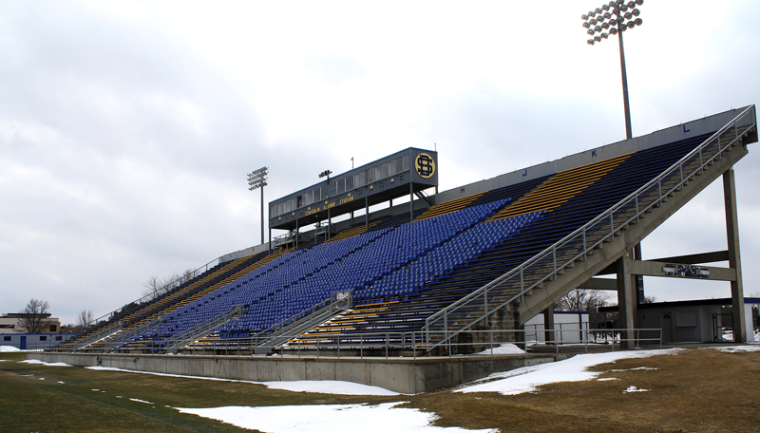A Walk Through Campus: Coughlin, Frost and Sexauer
March 30, 2011
Coughlin contributed much to campus
Visual Editor
Charles Coughlin, a 1909 graduate of SDSU and the first inductee to the SDSU Hall of Fame, has two buildings on campus named for him: Coughlin Campanile and Coughlin-Alumni Stadium.
Coughlin was passionate about sports and passionate about SDSU. He excelled at football, baseball, track, basketball and even bowling. Coughlin graduated president of his class.
The Campanile, built 20 years after Coughlin’s graduation from State, began as an idea between SDSU President Charles Pugsley and engineering professor H.B. Mathews. Mathews suggested the idea to Coughlin, an electrical engineering graduate, who decided to give them the Campanile.
At that point Coughlin was treasurer and general manager of the Briggs and Stratton Company in Milwaukee, Wis. He authorized SDSU to oversee the construction, though he chose the original 18 tone set of chimes himself.
Since then, the Campanile has undergone restoration which has included replacing the original chimes with a digital carillon and replacing damaged masonry.
Coughlin left Briggs and Stratton for a short time to teach mechanical engineering at Purdue University. He also was general manager at another company in Cudahy, Wis. before returning to Briggs and Stratton in 1922. Eventually he became president of that company.
Coughlin-Alumni Stadium, which began the planning stages in the late 1950s, was dogged by financial issues throughout its planning and construction. Much of the stadium was funded through pledges by alumni. At the final phases of funding, Coughlin, who had already donated $50,000 to the project, offered to help foot the bill for the dressing room, office and storage complex.
Frost named after former athletic director
Frost Arena, built in 1973, was named for Reuben “Jack” Frost, former SDSU coach and athletic director.
Frost was born in North Dakota in 1907. He began his coaching career in 1928 at Glenwood High School in Glenwood, Minn. In 1935 he was named athletic director and coach at Bemidji State College.
SDSU hired Frost as athletic director and head of the Department of Physical Education in 1947. He acquired his Ph.D. in physical education in 1958 from the University of Oregon. Frost left SDSU in 1960 for a distinguished professorship in Springfield, Mass.
While at SDSU, Frost developed the Health, Physical Education and Recreation graduate program.
In 1965, after leaving SDSU, Frost traveled to Greece to represent the United States in the Fifth Session of the International Olympic Academy. There he spoke about some of the psychological implications of Olympic sports.
Frost died in February 1989.
Local businessman, alumnus funded Sexauer Field
Sexauer Field is named for Elmer Sexauer, an SDSU graduate. Sexauer, a local businessman, provided the funds for the track to be built.
Born in 1888, Sexauer’s family moved to Volga in 1891. There, his father, George Sexauer, began The Sexauer Company.
Elmer Sexauer joined his father in the seed business in 1911 after graduating Brookings High School and SDSU. Sexauer was also a World War II veteran.
Sexauer enjoyed traveling with his wife and two children. The SDSU archives house over 400 postcards from his travels throughout the U.S., Canada and Mexico. His wife, Cecile, also kept diaries of some of their trips to Canada, Japan and within the U.S. Cecile died in 1973 after 57 years of marriage. Sexauer then married Ada Mitchel Dybdahl in 1974. She died in 1980. Elmer died in 1986.
When Sexauer retired in 1977 he was chairman of the board for The Sexauer Company. The company, based in Brookings, had expanded to Des Moines, Iowa, West Fargo, N.D. and Norfolk, Neb.
Sexauer Field, finished in 1920, originally had wood stands for the spectators. By the early 1950s the wood had deteriorated to the point of being dangerous. It was at this time that the Coughlin-Alumni Stadium moved into the planning stages.
//
























